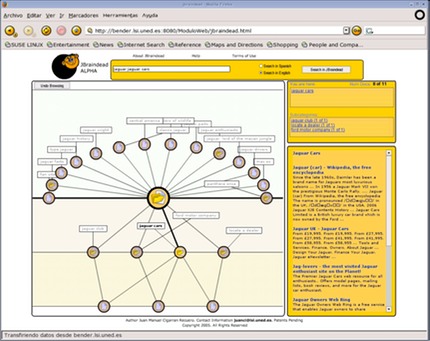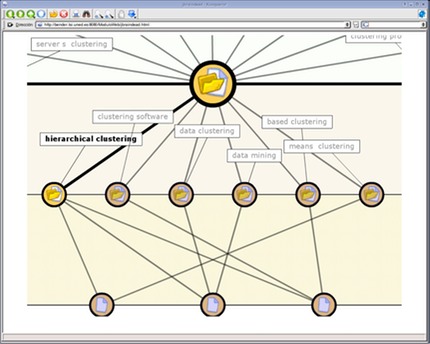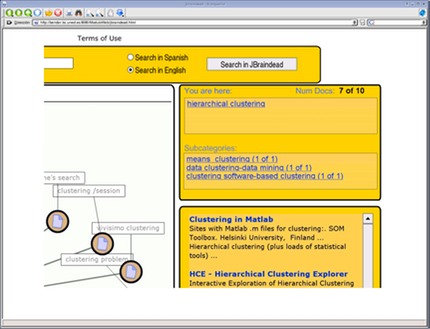JBrainDead is a web search engine developed by the Natural Language Processing and Information Retrieval Group at UNED (Spain). Unlike classic web search engines, JBraindead clusters a set of web search results obtained as a previous search process. The obtained clustering is automatically labeled using information extraction techniques applied to the retrieved information and it can be browsed using a generalization-specialization paradigm. These features allow the user to easily recognize, understand and access to the relevant information thorough the clusters.

DESCRIPTION
The JBraindead system is the research result of the NLP group at UNED concerning document clustering and its application to organize web search results. One of its main features, which differentiates JBraindead with respect to other commercial approaches such as Carrot (http://www.carrot2.org) or Clusty (http://www.clusty.com), is the use of a lattice to perform the document grouping instead a hierarchy. This approach allows representing complex relationships between clusters in a easier way (i.e. multiple inheritance). Moreover, the prototype implements techniques to automatically extract and select the clusters' descriptions (which are multi-term descriptors) specifically designed for these scenarios. Finally, the system introduces two novel paradigms to visualize and interact with the retrieved contents. These approaches exploit the informative richness of the lattices improving the end-user experience when exploring and interacting with the retrieved information.

INNOVATIVE ASPECTS
Nowadays there are a few commercial systems specifically oriented to perform document clustering using web search results, Carrot and Clusty are the most popular examples. For this reason, Jbraindead and also all the research behind can be considered as an added value to face the new generation of web search engines. New directions point to the use of the social information on the web and also the experimentation with new user interaction paradigms much more useful and comprehensive. In this way, we consider that JBraindead is well positioned. From the technological point of view, this system introduces novel approaches to perform a clustering task:
- The whole process is online, which means a dynamic clustering closer to the user's query.
- The use of complex structures (lattices) to organize the information. Such structures allow to access the same information via different paths.
- The system doesn't apply complex Natural Language Processing techniques, so it can be considered partially language independent.
- Although we are using Yahoo! And Google to produce the search results, the system can be easily adapted to any other search engine, public or private (intranet)
- Two novel visualization and interaction approaches. Both exploit the informative richness of the lattices and they have not been applied to any clustering system before.

If you are interested on JBraindead you can watch this video (broadcasted on Spanish Television) and also contact me.